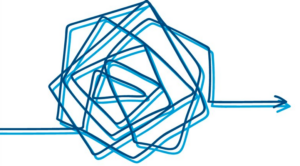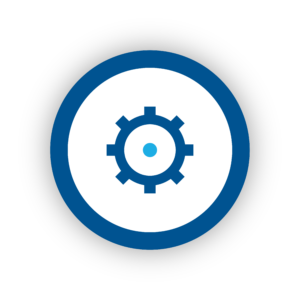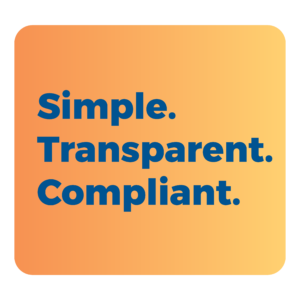Healthcare professionals from back-office procurement officials to c-suite finance executives are witnessing fiscal stresses on their organizations today at all levels of scale and scope of operation. These challenges are impacting bottom-line profitability and ripple through facilities, medical offices, and clinics.
These challenges are impacting bottom-line profitability and ripple through facilities, medical offices, and clinics.
Supply chain disruptions and inconsistencies can quickly make inventory management a major headache that stresses thin profit margins. For clinicians, getting what they need on the ground can become an everyday worry. And inflation makes itself felt every step of the way, from ordering and procurement to financial planning and accountability across the procure-to-pay process.
These challenges are well known across the healthcare industry, yet for many their daily responsibilities feel like putting out a hundred small fires while larger problems never get addressed.
Solution: Automated Procure-to-Pay Processes Fed by Artificial Intelligence
Procurement of goods and services in healthcare is highly complex and makes up one of the largest spend centers for any healthcare organization. The offices tasked with these workflows and functions have, like other areas in the industry, traditionally lagged in adopting automation solutions because of a heavily regulated environment and high-volume demands for both back-office professionals and the clinicians they serve.
Leading analysts for years have advocated for digitizing procure-to-pay functions through software automation, identifying it as the greatest opportunity for lowering spend, identifying areas for savings, and maximizing transparency and accountability across supply chain systems and workflows.

In healthcare procurement, automated procure-to-pay is fed by machine learning and artificial intelligence to offer value through:
- High-quality data, reporting, and alerts. Procure-to-pay automation uses AI processes to analyze tremendous volumes of purchasing and procurement data with reports available instantly based on a wide range of parameters. Alerts can be set for instant notification around major functions such as spend against budget.
- Vendor and supplier relationship management. P2P automation can make smart analysis of vendor management possible through accurate data around contract compliance, reliability, and fulfillment history. With transparency and accountability, healthcare procurement professionals can strengthen these crucially important relationships to mutual benefit.
- Up-to-the-moment inventory management. Artificial intelligence capabilities in procure-to-pay automation revolutionize inefficient, paper-based processes that are prone to human error and inaccuracy. The same is true for last-generation legacy automation systems that fall short in purchasing and inventory details outlined by facility and clinician, with histories and trends, ensuring that cost-killers such as duplicative ordering and supplies sitting past their expiration date are avoided.
- Data-based forecasting and planning. Powered by data reporting such as the highest areas of spend and how those cost centers are trending, AI-powered procure-to-pay automation drives smart and purposeful planning and forecasting in ways that lower costs and reduce workforce stress. While inflation and supply chain disruptions can be difficult at best to predict, P2P automation builds flexibility and resilience into financial planning and strategy.
- Invoices and accounts payable (AP) automation. One of the most powerful recent developments in artificial intelligence has been optical character recognition (OCG). OCG can visually extract data from paper records such as invoices and match information against purchase orders and payments. This has transformed what has traditionally been one of the most cumbersome processes in healthcare procurement into an area for speedier processes, reduction in delays and late fees, and impressive accuracy and accountability.
Best Practices and the Future of AI in Procure-to-Pay Processes
Machine learning and artificial intelligence are powering revolutionary changes in procure-to-pay processes and workflows in healthcare. Forward-looking leaders are seeing the value of software automation on their balance sheets and how it often pays for itself.
“I started looking at pricing and recouped about $70,000 in a three-month period from over-billing,” says the Supply Chain Director of a major American fertility clinic. “Just that alone has paid for (Procurement Partners automated solution) Hybrent three times over.”
These same leaders, from the procurement department to the finance office, are learning how to leverage AI-powered P2P automation and following trends that will impact operations, workflows, staff efficiency and retention, and the fiscal bottom line in the year to come. These considerations include:
- Total data integration. Machine learning, artificial intelligence, and the capacities for time and cost savings from procure-to-pay automation solutions are all leveraged from the power of data. Software automation will collect, analyze, and report your data. Effective leaders understand that as much data integration as possible provides maximum benefit. Reports, oversight, and planning data will begin to include information from other solutions and platforms including enterprise resource planning (ERP), electronic health records (HER), and supply chain management (SCM) software.
- Deeper Supplier and Vendor Choices and Relationships. Deeper integration between AI-fed P2P software solutions and their supplier networks will lead to even deeper real-time visibility into vendor inventories and even communication about future projected disruptions. More enabled cooperation between healthcare organizations and vendors and suppliers will mean more mutual benefit, efficiencies in supply and payment, and mutual opportunities for education and collaboration.
- Continued Machine Learning. Leading P2P automation companies such as Procurement Partners are continually improving and developing their products. This means developing artificial intelligence algorithms the continue to learn from new data and changing procurement patterns both for individual healthcare organizations and across the industry. Healthcare leaders are looking to work with a company that knows healthcare such as Procurement Partners.
- Training and User Adoption. Automated P2P software solutions and their AI and machine-learning benefits require capacities for quick training and easy-to-use platforms that promote user adoption.

Looking to Reduce Your Annual Spend?
Procurement Partners helps healthcare organizations strengthen their supply chain operations while reducing annual spend by over 10%. As a leading healthcare supply chain software solution purpose-built for post-acute, non-acute, and continuum-of-care providers, the platform simplifies the procure-to-pay process. Users can place orders and process invoices for all suppliers through a centralized system. By automating procurement workflows, organizations report up to 40% time savings and 95% supplier contract compliance.





